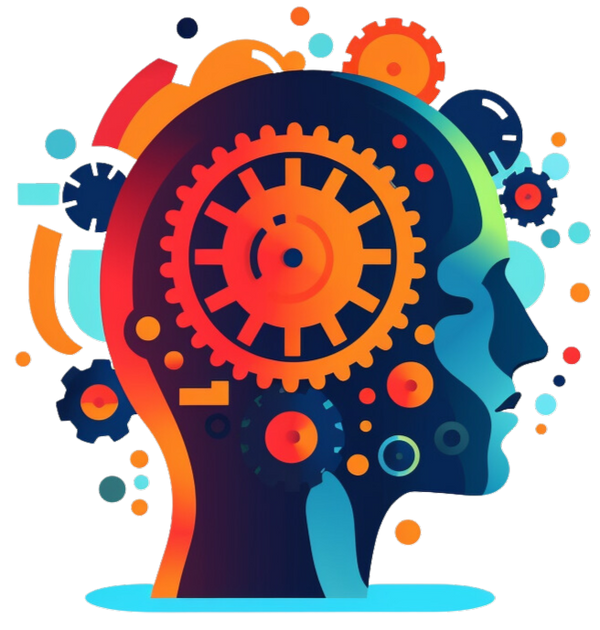
ADHD and impulsivity: When emotions boil over again
Share
Heckling, snap decisions, crocodile tears – does this sound familiar? Here you'll read why ADHD children react impulsively, what strengths lie in this, and how your child can use them to their advantage.
Heckling, snap decisions, crocodile tears – does this sound familiar? Here you'll read why ADHD children react impulsively, what strengths lie in this , and how your child can use them to their advantage.
Impulsivity is often the loudest signal of ADHD in children . A child might burst into a conversation, jump from the table, or race off without a helmet. From the outside, this looks like disrespect and "bad parenting" (the fact that grass and children don't grow better if you pull on it is a different story. In fact, the "best-behaved" children are often those with the best relationship with their parents).

ADHD is about neurobiology. Findings into the brain's use of blood sugar and genetic research also show that it's a hereditary trait. That's why ADHD children sometimes really can't help it—and shouldn't be condemned for it.

Example: Mia from Zurich, 8 years old, ADHD-H
Mia shouts out answers in class, runs off when the bell rings, and forgets her jacket. The teacher suspects discipline problems. In reality, it's girl-specific ADHD. In girls with ADHD, impulsivity often manifests itself more subtly: abrupt withdrawal, impulsive on-off friendships, violent crying ("Boys are wild, girls aren't" < societal pressure). ADHD is diagnosed far more often in boys, even though the gender ratio is roughly 50:50 . Psychologists suspect that the high number of undiagnosed ADHD women is due to them having succumbed to societal pressure to conform ("social masking").

Causes of high impulsivity: A look into the ADHD brain
The prefrontal cortex is the central deceleration station for impulses from the posterior, older brain regions. Imaging studies show that it matures on average two to three years later in children with ADHD and is somewhat smaller than in their peers .
A randomized Zurich study even showed that targeted neurofeedback in the ADHD brain can reduce high impulsivity . Once again, the question arises: Why change things that aren't inherently WRONG? The reason: ADHD brains are probably not designed for a time when there are hardly any threats from wild animals and food is left lying around in supermarkets.
Central to ADHD impulsivity is the brain's differently structured reward system (dopamine system): This neurotransmitter is released in response to higher or different stimuli and circulates in the synapses between nerve cells for too short a time. Therefore, people with ADHD are "constantly searching for new stimuli. " Incidentally, there are significantly more ADHD sufferers among elite athletes —a prominent example is "the human seal," top US swimmer Michael Phelps .

Five SOS strategies for outbreaks
1. Stop gesture: Hand raised, breathe deeply – signal pause.
2. Divert attention: squeeze an anti-stress ball , drink cold water.
3. Short commands: “First take off your shoes, then talk” – no more than eight words.
4. Set a time frame: “It’s your turn in two minutes” – an hourglass helps.
5. Offer a place to rest: pillow corner, headphones – turn down the sensors .
Structures work wonders
Clear structures developed and understood with the child can be enormously helpful for ADHD. For example:
Fixed routines: Breakfast at 7 a.m., brushing teeth at 7:15 a.m.
Visual checklists: Pictograms on the refrigerator: snack, homework, gym clothes.
Timers & Clocks: Silent timer shows remaining time – discussions end.
Self-instruction: Child says loudly: “I wait, I ask” – brake trained.
Praise beats punishment: Every controlled destructive impulse deserves a high-five or sticker.
As adults, we should ask ourselves what exactly we did well before we started giving the clocks around us control over our lives.

Use impulsivity as a big advantage
Impulsive children don't think in boxes ; they jump straight to unusual ideas. This raw energy can be channeled into creativity, courage, and lightning-fast problem-solving.
Idea journal: Write down every spontaneous inspiration. Once a week, create a favorite: a stop-motion film, a new cookie recipe, a Lego robot.
Action learning formats: Sports with short reaction times (bouldering, parkour, handball), improvisational theatre or coding challenges tie energy to rules.
Traffic light training: Green (clear path), yellow (quick check), red (stop). Adhesive dots in the children's room or a traffic light widget on the phone visualize this.
Problem-solving heroes: Let your child save the menu when an ingredient is missing, or build a Lego bridge in ten minutes when the marble run stops.
Risk competence: Instead of “Not so wild!”, it’s better to ask “What is the bravest – but safest – way?” Daring requires preparation.

Family hackathon: One Saturday, one problem ("How do we save water?"), three brainstorming sessions, one prototype. Children direct, parents moderate.
Celebrate success loudly: Every idea implemented – regardless of whether it works – receives applause. Success is about trying things out.
This transforms impulsiveness from a constant fire into a useful spark in everyday life. Children experience self-efficacy, parents see how chaos turns into creativity —and the family gains a wealth of fresh solutions.
Impulsive reactions are not a flaw, but a neurobiologically explainable pattern . Parents who understand the causes create structures, recognize strengths, and seek help when needed. Thus, the tendency toward intense emotion becomes a driving force for creativity, courage, and joy in life.
